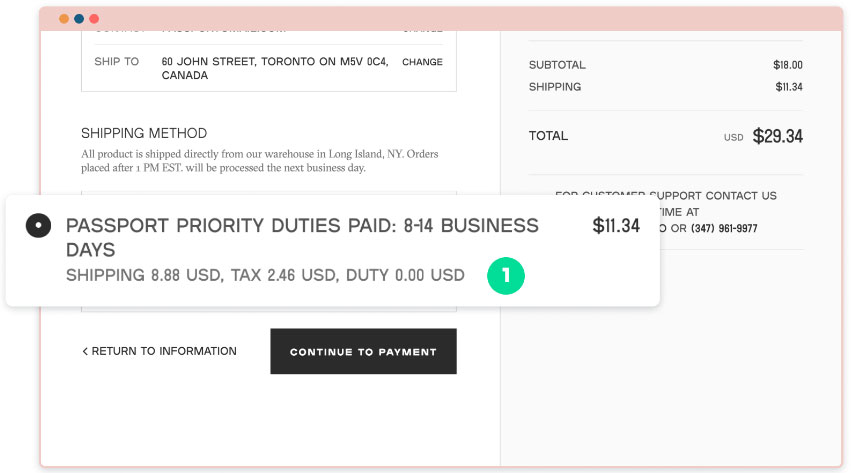Unlocking the Global E-Commerce Goldmine
The global e-commerce market is a vast and lucrative landscape, estimated to be worth $6.3 trillion in 2024. This large market presents unparalleled growth opportunities for businesses willing to expand their horizons. With the total e-commerce industry worldwide continuing to rise to $8 trillion by 2027, now is the time for brands to tap into the immense potential that lies beyond their domestic borders.
Expanding internationally opens the door to a unique advantage: a lower customer acquisition cost (CAC) compared to domestic markets. While brands may face challenges adapting to different cultural norms, the potential for higher average order values (AOVs) often outweighs the initial investment.
However, not all brands jump into the global e-commerce arena due to various challenges. Issues such as creating a localized experience, navigating compliance regulations, and making customer experience (CX) investments can deter businesses from venturing into international markets. The brands willing to combat these challenges by deploying localized strategies and focusing on the delivery experience are the ones that will capture the majority of the shoppers in the global e-commerce market.
5 Localization Methods That Net Immediate Benefits
In the dynamic landscape of global e-commerce, unlocking the potential of international markets requires a nuanced and market-specific approach. Embracing these five localization and delivery experience methods can empower businesses to navigate the complexities of selling their products internationally and pave the way for sustained global success.
1. Enhancing Searchability With SEO Localization
The journey begins with ensuring your brand and products are easily discoverable by international customers. Standard search engine optimization (SEO) practices might not cut it in diverse markets with varying search habits and languages.
It’s essential to prioritize SEO localization by optimizing website content, metadata, and keywords tailored to the language and search trends of each target market. Conduct thorough keyword research in local languages and strategically incorporate them into your content.
Creating region-specific landing pages and localized URLs further improves search visibility, driving organic traffic from international audiences. Recognize that search engines like Google aim to showcase the best results for a user’s query. Therefore, a localized website with personalized language, currency, and content relevancy plays a pivotal role in achieving this goal.
2. Local Storefront Optimizations
Offering a localized website experience is key to engaging international consumers and boosting conversions. Statistics show that sites localizing currencies on product pages see a 40% increase in conversion rates.
Currency, language, and imagery should be adapted to align with local aesthetics and cultural norms. Additionally, featuring region-specific product recommendations, testimonials, and reviews can improve the site’s relevance and credibility for international visitors.
Using geo-location technologies to automatically redirect visitors based on their location enhances user experience and streamlines the purchasing process. Brands that offer region-specific products based on factors like seasonality, local holidays, and product popularity often report much higher order conversion rates.
3. Pricing Localization and Testing
Addressing the #1 reason for shopping cart abandonment — extra costs and surprise fees — requires a comprehensive pricing localization strategy. This involves more than simply converting currencies; it requires adjustments to pricing strategies to reflect the local market dynamics, purchasing power, and consumer preferences. Conducting thorough market research is crucial to gauge cost sensitivity and identify competitive benchmarks in each region.
Implement dynamic pricing strategies that adjust based on demand, competition, and currency fluctuations. Testing duty and tax-inclusive prices can further align your products with local expectations.

Additionally, offering region-specific discounts, promotions, and loyalty programs, especially those aligned with local holidays, incentivizes purchases and drives customer engagement. Together, these approaches not only maximize revenue but also strengthen your position in international markets.
4. Providing Local Shipping Options
For 77% of online shoppers, unsatisfactory delivery options have led them to abandon their online purchases. This means that ensuring pricing is clear and transparent, including taxes and duties upfront, is critical in avoiding cart abandonment due to unexpected surprises and hidden costs.
Providing convenient payment and multiple shipping options — such as Economy, Priority, or Express–can also simplify the purchasing process and remove barriers to purchase.
5. Branded and Localized Tracking Experiences
Real-time order tracking is a game-changer, with 87% of shoppers finding it makes their buying experience more enjoyable. A customer’s experience extends beyond the website. Having branded shipping boxes, email communication, tracking pages, and responsive customer service make consumers feel secure and confident about returning and shopping again.
![]()
Offering personalized and responsive customer support is essential for building trust and loyalty among international consumers. Engaging with them on social media platforms and forums in their native language helps create a sense of community and strengthens their connection to the brand.
Seizing Global Opportunities Through Managed Support
Mastering global markets requires a meticulous approach to localization. However, as businesses embark on their global expansion journey, the need for a comprehensive solution, as well as hands-on support from knowledgeable international experts, becomes evident.
The complexities of developing localized growth strategies, as well as managing shipping and compliance hurdles, can slow brands down. That’s why many brands turn to providers for assistance in cutting out the complexities of international commerce.
Passport Global™, an all-in-one global shipping and internationalization solution, is designed to simplify and accelerate the process of expanding internationally.
This turnkey solution provides end-to-end support by providing in-house logistics and compliance services, full visibility into performance data, localized growth strategies and store conversion testing, and direct order payments for reduced cash flow delays, enabling brands to quickly scale up their international commerce.
Unleashing the Power of Localized Global E-Commerce
The global e-commerce market offers boundless opportunities for businesses ready to embrace international expansion. By addressing the challenges through localized experiences, compliance adherence, and strategic CX investments, brands can unlock the potential for low CACs and higher AOVs.
Following the five key steps, including SEO localization, storefront optimizations, pricing strategies, shipping methods, and branded tracking experiences, sets the stage for successful global e-commerce endeavors.
With Passport Global as an easy all-in solution, the journey to fast global sales growth becomes not just conceivable but easily achievable. Embrace the global market, localize effectively, and watch your business flourish on the international stage.
About Passport
Founded in 2017, Passport® is an international solutions provider that helps brands go global, easily. With internationalization technology, in-house shipping & compliance services, and the expertise to help brands profitably grow, Passport has enabled over 1,000 merchants of all sizes to seamlessly access markets worldwide. To learn more about the company, offerings, and careers, visit passportshipping.com.















































Social Media
See all Social Media